کتاب استراتژیهای توسعه فرمولاسیونها، بر اساس تجربیات کاربردی پژوهشگران در زمینه استراتژیهای توسعه فرمولاسیونها و به منظور افزایش سرعت فرآیندهای فرمولاسیون نگارش شده است. نویسندگان این کتاب علاوه بر اینکه به مهمترین روشهای مورد استفاده جهت طراحی و آنالیز فرمولاسیونها میپردازند، استراتژیهای کلی بهبود کارایی و راندمان فرآیندهای توسعه فرمولاسیون را نیز مورد بررسی قرار میدهند. با استفاده از این کتاب شما قادر خواهید بود:
- با درنظر گرفتن نتیجه نهایی، نگاه استراتژیک به فرایند توسعه فرمولاسیون داشته باشید.
- آزمایشات غربالگری برای شناسایی اجزای مهم در عملکرد فرمولاسیون طراحی کنید.
- آزمایشات بهینهسازی به منظور شناسایی حداکثر پاسخ در فضای طراحی آزمایش را طراحی کنید.
- آزمایشات غربالگری و بهینه سازی را با استفاده از روش های گرافیکی و عددی، تجزیه و تحلیل کنید.
- معیارهای مختلفی مانند کیفیت، هزینه و عملکرد فرمولاسیون محصول را بهینه کنید.
- طراحی و تجزیه و تحلیل فرمولاسیونهایی را انجام دهید که علاوه بر اجزای فرمولاسیون شامل متغیرهای انجام فرآیند نیز هستندو
- پیوند گرافیک پویا با آمار قدرتمند JMP به صورت بصری یافته هایی را به اشتراک میگذارد که برای فرمولاتورها منسجم و عملیاتی است.
با استفاده از این کتاب،شما میتوانید از طراحی آزمایشات کامپیوتری در مواقعی که طراحی آزمایشات کلاسیک با توجه به محدودیتهای فیزیکی و اقتصادی قابلیت انجام ندارند، استفاده کنید. کتاب استراتژی های توسعه فرمولاسیونها، یک راهنمای منحصر به فرد است که اطلاعات ضروری را در اختیار فرمولاتورها قرار می دهد تا بتوانند با موفقیت مطالعات فرمولاسیون را در صنایع شیمیایی، بیوتکنولوژی و داروسازی انجام دهند.
Table of contents
Preface
About This Book
About These Authors
Part 1: Fundamentals
Chapter 1 Introduction to Formulations Development
Overview
1.1 Examples of Formulations
1.2 How Formulation Experiments are Different
Displaying Formulation Compositions Using Trilinear Coordinates
1.3 Formulation Case Studies
Food Product
Pharmaceutical Tablet Formulation
Lubricant Formulation
Pharmaceutical Tablet Compactability
1.4 Summary and Looking Forward
1.5 References
Chapter 2 Basics of Experimentation and Response Surface Methodology
Overview
2.1 Fundamentals of Good Experimentation
Well-Defined Objectives
High Quality Data
How Many Formulations or Blends Do I Need to Test?
2.2 Diagnosis of the Experimental Environment
2.3 Experimentation Strategy and the Evolution of the Experimental Environment
Screening Phase
Optimization Phase
2.4 Roadmap for Experimenting with Formulations
Part 2: Design and Analysis of Formulation Experiments
Chapter 3 – Experimental Designs for Formulations
Overview
3.1 Geometry of the Experimental Region
3.2 Basic Simplex Designs
3.3 Screening Designs
3.4 Response Surface Designs
3.5 Summary and Looking Forward
3.6 References
Chapter 4 – Modeling Formulation Data
Overview
4.1 The Model Building Process
4.2 Summary Statistics and Basic Plots
4.3 Basic Formulation Models and Interpretation of Coefficients
4.4 Model Evaluation and Criticism
4.5 Residual Analysis
4.6 Transformation of Variables
4.7 Models with More Than Three Components
4.8 Summary and Looking Forward
4.9 References
Chapter 5 – Screening Formulation Components
Overview
5.1 Purpose of Screening Experiments
5.2 Screening Concepts for Formulations
5.3 Simplex Screening Designs
5.4 Graphical Analysis of Simplex-Screening Designs
5.5 After the Screening Design
5.6 Estimation of the Experimental Variation
5.7 Summary and Looking Forward
5.8 References
Part 3: Experimenting With Constrained Systems
Chapter 6 – Experiments with Single and Multiple Component Constraints
Overview
6.1 Component Constraints
6.2 Components with Lower Bounds
6.3 Three-Component Example
6.4 Computation of the Extreme Vertices
6.5 Midpoints of Long Edges
6.6 Sustained Release Tablet Development – Three Components
6.7 Four-Component Flare Experiment
Computation of the Vertices
Number of Blends Required
Addition of the Constraint Plane Centroids
Regions with Long Edges
Evaluation of the Results
6.8 Graphical Display of a Four-Component Formulation Space
6.9 Identification of Clusters of Vertices
6.10 Construction of Extreme Vertices Designs for Quadratic Formulation Models
Replication and Assessing Model Lack of Fit
6.11 Designs for Formulation Systems with Multicomponent Constraints
6.12 Sustained Release Tablet Formulation Study
6.13 Summary and Looking Forward
6.14 References
Chapter 7 – Screening Constrained Formulation Systems
Overview
7.1 Strategy for Screening Formulations
7.2 A Formulation Screening Case Study
7.3 Blending Model and Design Considerations
7.4 Analysis: Estimation of Component Effects
Calculating Component Effects: Examples
7.5 Formulation Robustness
7.6 XVERT Algorithm for Computing Subsets of Extreme Vertices
Eight-Component XVERT Design and Analysis
7.7 Summary and Looking Forward
7.8 References
Plackett-Burman Designs for 12, 16, and 20 Runs
Chapter 8 – Response Surface Modeling With Constrained Systems
Overview
8.1 Design and Analysis Strategy for Response Surface Methodology
8.2 Plastic Part Optimization Study
8.3 Quadratic Blending Model Design Considerations
8.4 Example – Plastic Part Formulation
8.5 Example – Glass Formulation Optimization
8.6 Using the XVERT Algorithm to Create Designs for Quadratic Models
8.7 How to Use Computer-Aided Design of Experiments
8.8 Using JMP Custom Design
8.9 Blocking Formulation Experiments
8.10 Summary and Looking Forward
8.11 References
Part 4: Further Extensions
Chapter 9 – Experiments Involving Formulation and Process Variables
Overview
9.1 Introduction
9.2 Additive and Interactive Models
9.3 Designs for Formulations with Process Variables
9.4 The Option of Non-Linear Models
9.5 A Recommended Strategy
9.6 An Illustration Using the Fish Patty Data
9.7 Summary and Looking Forward
9.8 References
Chapter 10 – Additional and Advanced Topics
Overview
10.1 Model Simplification
10.2 More Advanced Model Forms
Common Alternative Model Forms
Application of Alternative Models to the Flare Data
10.3 Response Optimization
10.4 Handling Multiple Responses
The Derringer and Suich Approach
10.5 Multicollinearity in Formulation Models
What Is Multicollinearity?
Quantifying Multicollinearity
The Impact of Multicollinearity
Addressing Multicollinearity
10.6 Summary
10.7 References
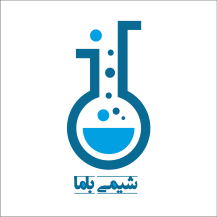
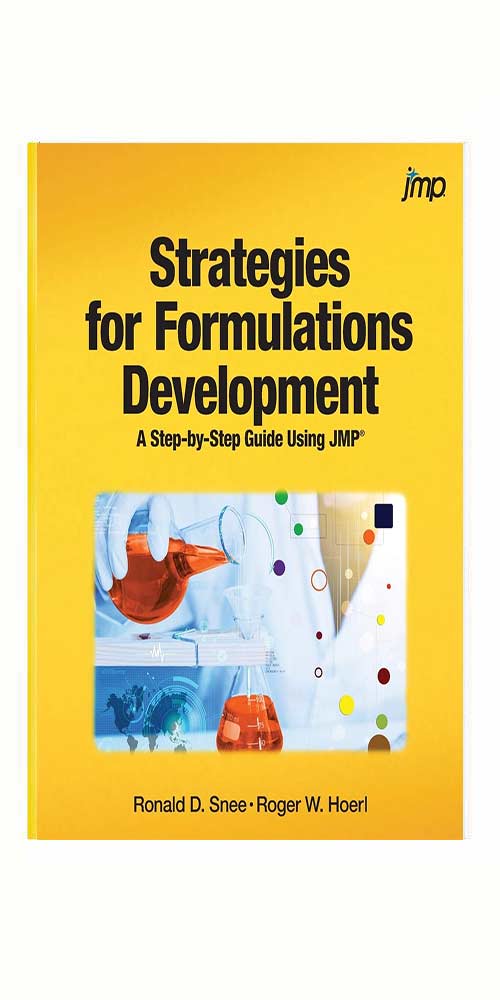
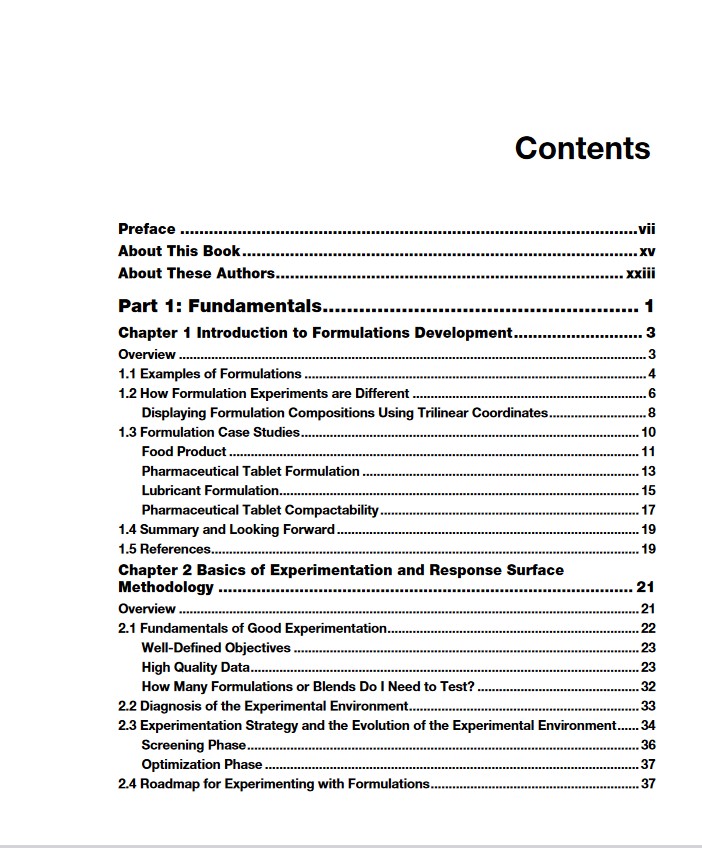
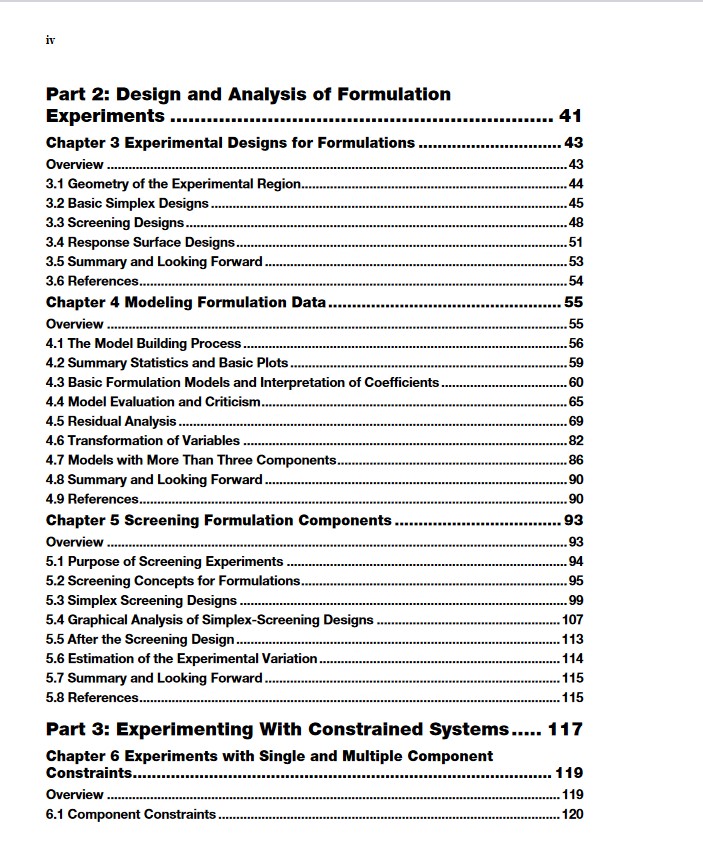
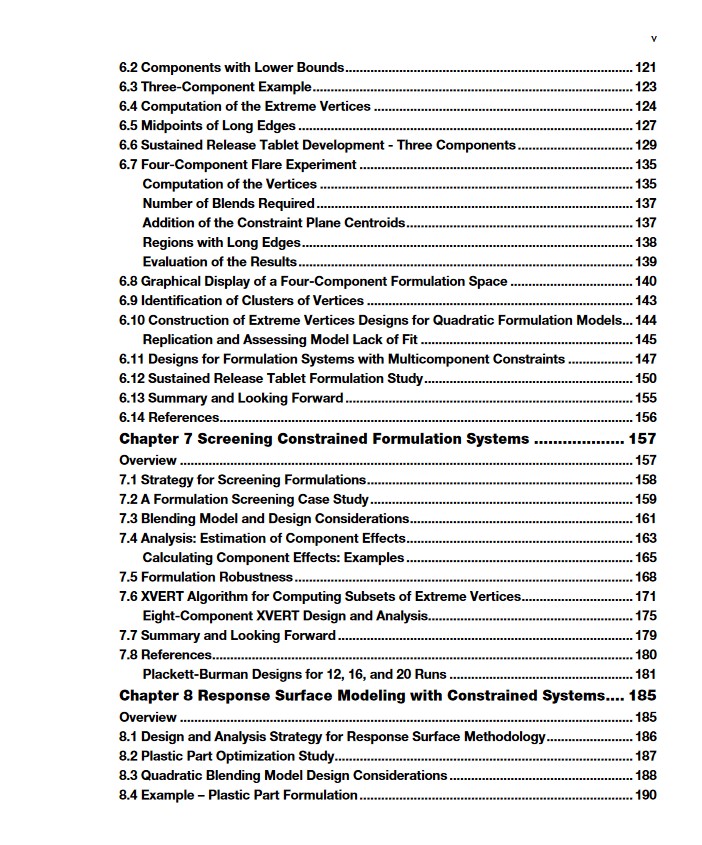
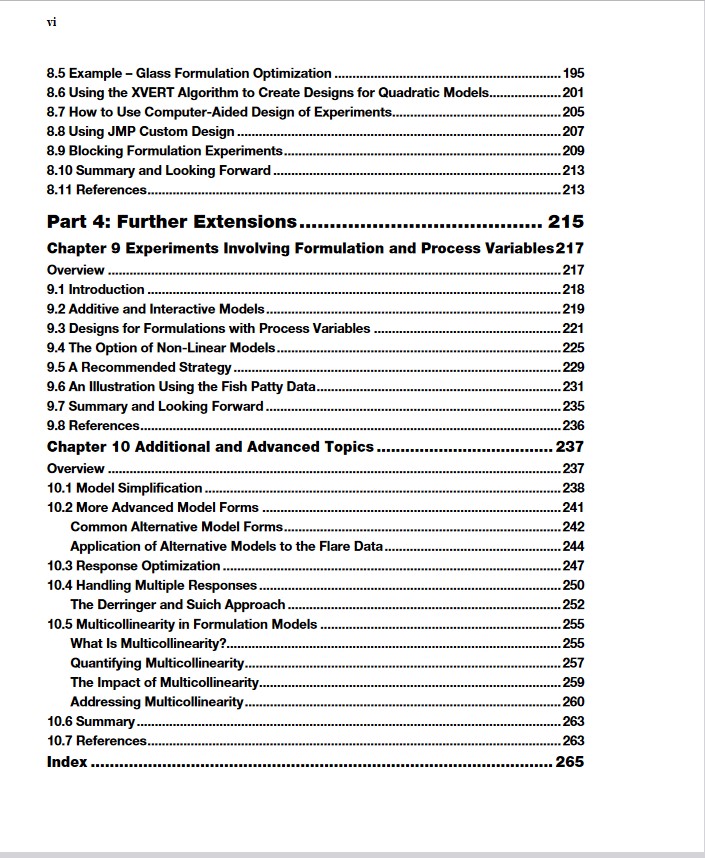





نقد و بررسیها
هنوز بررسیای ثبت نشده است.